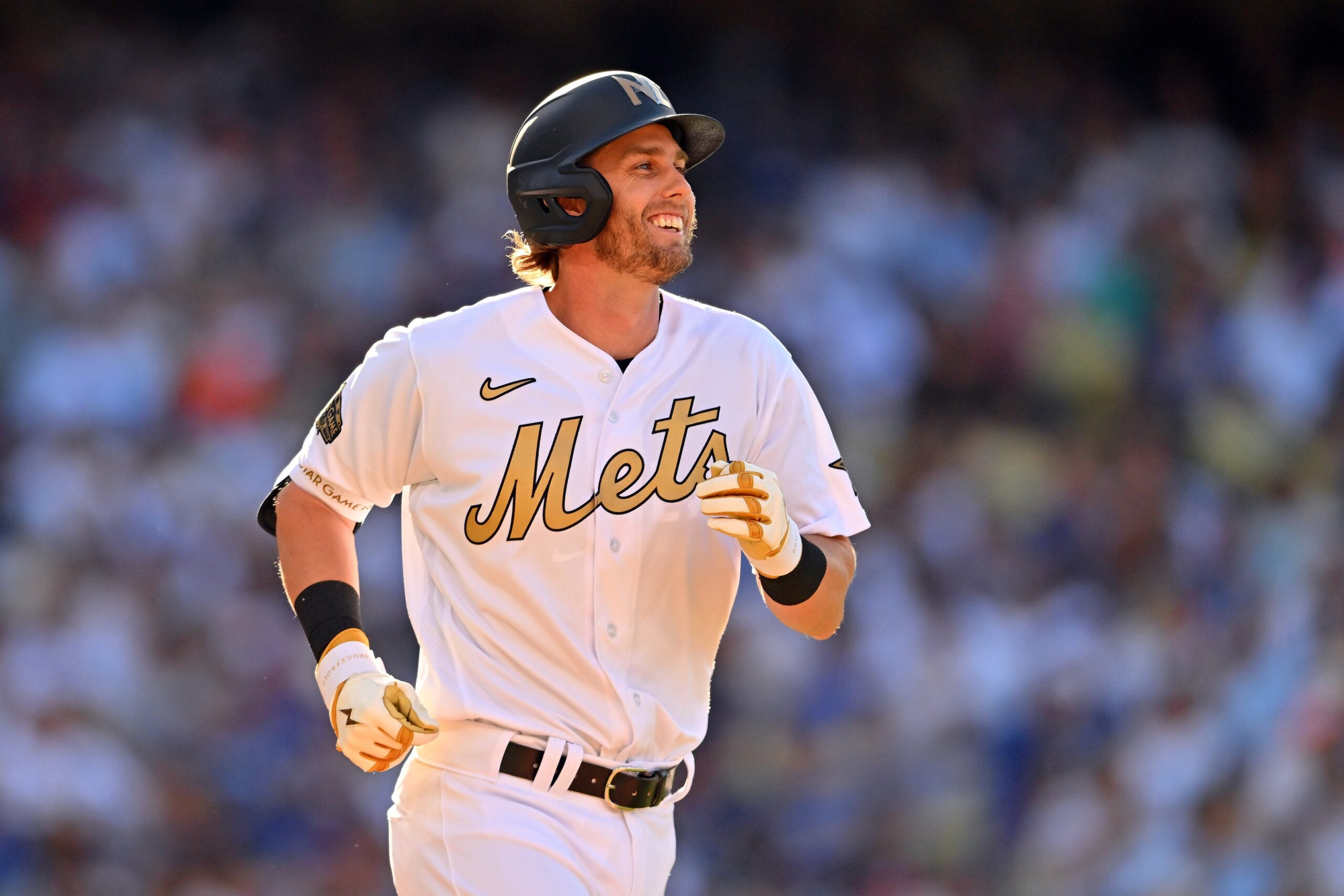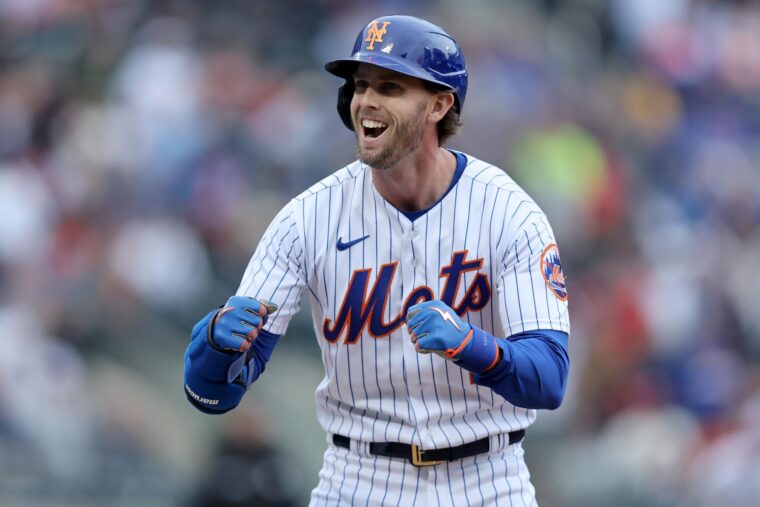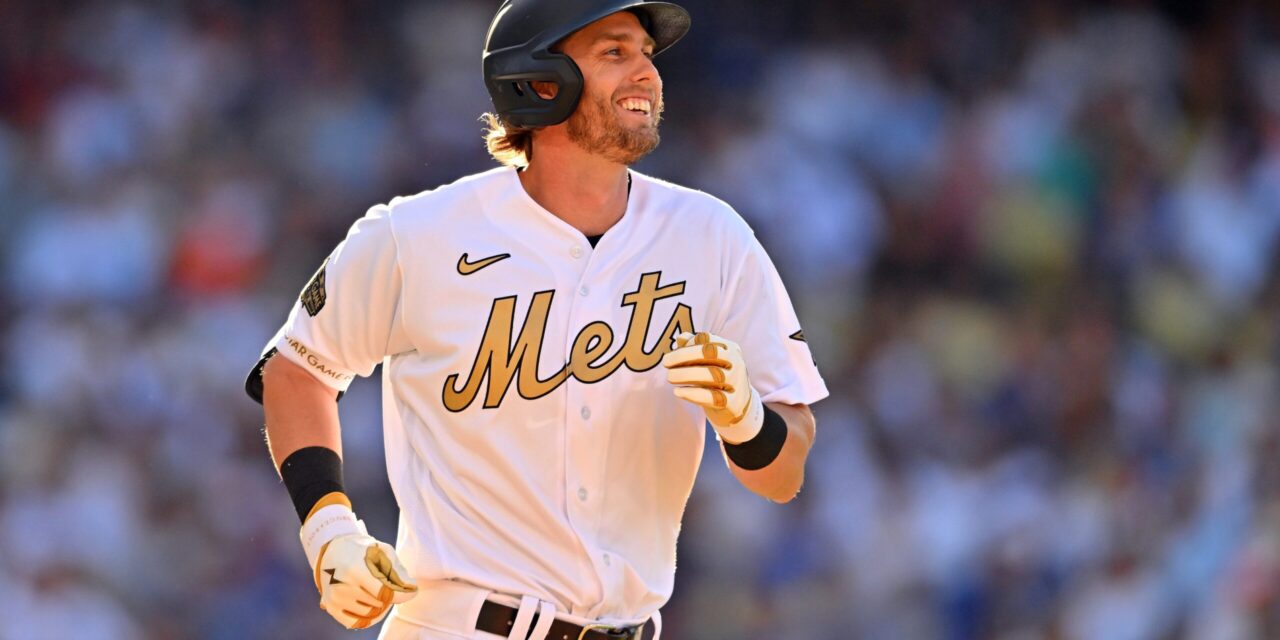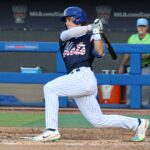Did the New York Mets get their best pure hitter back?
Jeff McNeil‘s 2023 season has been one of abject frustration. After a strong first month, the Flying Squirrel became the Flying Helmet, as his struggles led to much muttering under his breath, helmet-tossing, and stalking back to the dugout.
However, after a trade deadline sell-off, of which McNeil’s season-long slump could have partially caused, the jack-of-all-trades infielder has finally begun to emerge from hibernation. The month of August has been kind to him thus far. Finishing the season strong could provide a glimmer of hope for McNeil heading into the offseason. Despite a miserable failure of a year, if McNeil gets it going, the Mets will hopefully have one more reliable player to pencil into their lineup next season.
In general, it’s best not to overreact to a few weeks of play. However, since it’s more on par with McNeil’s career norms, it’s worth examining if he’s returning to previous trends to rediscover success. How has he turned it around, and is this hot streak a purveyor of the future or merely a flash in the pan that occasionally comes for most players at some point in a season?

Jayne Kamin-Oncea-USA TODAY Sports
Statistical Differences
Through July 23, McNeil was hitting .248/.322/.321 (.643 OPS). Since then, over a span of 28 games, he’s hitting .333/.388/.468 (.857 OPS) with four doubles, one triple, three home runs, and 17 RBIs. He’s had 10 multi-hit games over that span (35.7 percent) after having just 17 in his previous 71 contests (23.9 percent). In doing so, he raised his slash line to .268/.337/.356 (.693 OPS), an increase of 20, 15, 35, and 50 points, respectively.
Consider that McNeil’s 2022 stat line was .326/.382/.454 (.836 OPS) with 53 multi-hit games (35.8 percent). His numbers over the last 28 games are near that elite line, if slightly lighter on the extra-base hits (7.21 percent vs. 9.19 percent). Obviously, one month is one month, but this looks closer to the 2022 McNeil.
Why?
A bit over a month ago, I posted an article assessing McNeil’s struggles. Some of the issues I pointed out included his popups, ineffective pulling, and struggles against four-seamers and sliders. Let’s see if any of those have improved during this hot stretch.
Popups
McNeil’s popup rate is down from 10.6 percent through July 23 to 4.95 percent since. That’s in line with the lowest rate of his career (4.9 percent in 2020) and is superior to his 5.9 percent popup rate from 2022. That has definitely been an improvement. This is despite a sweet spot rate (batted balls with a launch angle between 8-32 degrees) of just 31.7 percent over those 28 games, which is nearly identical to what it had been before (31.6 percent).
Even without an optimal launch angle, McNeil has managed to avoid the 50-plus launch angle, which signifies a popup.
Pulling the Ball
The conclusion I drew in my previous article was that McNeil should stop trying to pull the ball so much based on his poor results to that side. I was seemingly completely wrong, as McNeil is suddenly succeeding immensely to the pull side. Here are his numbers over the last 28 games:
- 36.6 percent rate
- .405 BA/.730 SLG
- 18.9 percent extra-base hit rate
McNeil is also getting solid results to center field, where he’s hit 44.6 percent of the time. He’s hitting .333 with a .400 SLG on those balls in play, albeit with just one extra-base hit. Still, to the opposite field, McNeil is struggling with just a .188 BA and .263 SLG on 19 balls in play. It’s a small but encouraging sample size.
It makes sense that McNeil’s extra-base hits would come when pulling the ball, as that is the case for most hitters. It’s interesting, though, that his pull rate is similar (36.6 percent vs. 37.2 percent through July 23), but his results are so much better. He was hitting at a .214 clip to the pull side before this hot stretch.
Four-seamers and Sliders
McNeil was struggling against multiple pitch types, but the worst were four-seamers and sliders. In his last 28 games, McNeil is hitting .364 on 33 batted balls against four-seamers with a .392 wOBA and a .545 SLG. His rate of four-seamers faced is down from 37.8 percent to 32.7 percent, but he’s mashing those pitches. His slider production has remained poor, though, as he’s hitting o-for-15 against them.
Still, the increase in his fastball production is vast. McNeil was hitting just .212/.308/.308 against four-seamers, and now he’s suddenly murdering them.
BABIP
McNeil’s BABIP on groundballs is up from .237 to .312 over the past 28 games. While this is nowhere near his .335 groundball BABIP from 2022, his overall BABIP during that time is .317 compared to .282 prior. Despite hitting groundballs at a 47.9 percent clip, which is far higher than he was before (42.2 percent), McNeil has enjoyed increased success due to his nearly 40-point rise in BABIP.
It helps that McNeil is finally getting improved results on his line drives, too. He’s hit line drives at a 22.8 percent rate, which is actually down from his 29 percent prior rate; however, his batting average is up from .603 to .652 on those hits, which also helps.

Brad Penner-USA TODAY Sports
Stop Looking, Start Hitting
In a recent Newsday column, Laura Albanese discussed the Mets’ hitting approach. A quote from hitting coach Jeremy Barnes stood out.
“We knew that after last year, we got a lot of… ‘cheaper hits.’ We led the league last year in infield hits for a long period of time and the two areas that we could definitely improve upon were walks and hitting the ball 95 mph. Those two things typically lead to runs. We’ve done both of those things better this year, but we just haven’t had the runs. It’s been one of those weird years.”
In other words, the Mets preach an overly selective plate approach. Across the team, this has led to a refusal to swing. McNeil is the biggest victim.
McNeil’s career-high ranking in hard-hit rate is the 37th percentile. His average exit velocity hovers below the 30th percentile. Hitting the ball hard is not his game; nor is walking a lot. Barnes coached McNeil to highlight his weaknesses and ignore his strengths.
Over the last month, McNeil’s take rate reduced from 49.2 percent to 43.2 percent. He’s hit 25.7 percent of his pitches into play, up from 22.7 percent. He’s swinging and missing less (4.75 percent vs. 7.16 percent). In particular, he’s hit fastballs more often, especially when they’re in the strike zone (33.7 percent vs. 28.4 percent).
It’s not that McNeil is hitting the ball harder; his average exit velocity is 84.4, down from 86.2. Perhaps this 28-game sample size is simply a fluke, but it doesn’t seem so. The question is if he can sustain it until the end of the year, or if another funk will stretch out interminably. After all, he hit .351/.419/.494 (.912 OPS) in July 2021, only to regress to .187/.237/.297 (.534 OPS) in August.
New Rules?
A recent article in The Athletic by Will Sammon and Tim Britton explored another angle that could have affected McNeil. The column discussed how the new rules may have detrimentally affected both the Mets’ hitters and pitchers. One of the theories they explored is whether McNeil lost out from the shift ban, which took away an easy slump-buster for him. He used to spray the ball the other way to get his confidence back, but that’s no longer as simple as getting bat to ball. Barnes admitted that this is a possibility.
Still, I suspect that the other explanation they offered is more pertinent. In 2022, McNeil ranked fifth in baseball for the most seconds between pitches. Mark Canha (first) and Pete Alonso (second) joined him in the top five. For more deliberate hitters, speeding up their timing could have been a serious disadvantage. Is it possible that McNeil is finally acclimating to the difference after not having spring training to adjust due to the World Baseball Classic? Only time will tell, but it’s something worth monitoring.
The Mets chose not to sell low on McNeil and unload him at the trade deadline. With his four-year contract extension, history of hitting, positional versatility, and defensive acumen, he’s not likely to be going anywhere fast. If it was just a matter of adjustment, perhaps McNeil can finish strong in 2023 and provide renewed optimism for next season.















